The Art of Storytelling Through Pottery
Exploring the world of pottery is like opening a treasure chest filled with stories, emotions, and cultural significance. Each piece of pottery is not just a vessel or a decorative item; it's a canvas of human experience. From ancient civilizations to modern artists, pottery has served as a medium through which stories are told, histories are preserved, and identities are expressed. Imagine holding a beautifully crafted pot in your hands; it's not just clay but a narrative waiting to unfold, connecting you to the past and the people who shaped it.
Pottery has been a part of human existence for thousands of years, and its significance goes far beyond mere functionality. It has been used for cooking, storage, and rituals, but more importantly, it has acted as a powerful storytelling tool across various cultures and epochs. The shapes, colors, and designs found on pottery pieces tell tales of the people who created them, their beliefs, struggles, and triumphs. This article delves into the historical, cultural, and artistic significance of pottery as a storytelling medium, revealing how this ancient craft continues to resonate in our lives today.
Pottery's journey through history is nothing short of fascinating. Dating back to around 29,000 BC, the earliest known pottery was discovered in the Czech Republic. These ancient artifacts reveal not just the artistic capabilities of our ancestors but also their daily lives and rituals. For instance, pottery from the Neolithic period often featured intricate designs that reflected the natural world, serving as a form of communication and expression. As civilizations evolved, so did pottery techniques and styles, each era leaving its mark on the clay.
As we explore different cultures, we find that pottery serves as a historical record. For example, the Minoan civilization of ancient Crete created pottery adorned with vibrant colors and intricate motifs, reflecting their connection to nature and mythology. Similarly, Native American pottery often tells stories of the land, ancestors, and spiritual beliefs through its unique patterns and symbols. These historical narratives embedded in pottery not only showcase the artistic talent of the creators but also offer insights into their societal values and lifestyles.
Every culture has its unique stories, and pottery acts as a vessel for these narratives. The styles, techniques, and designs found in pottery are deeply rooted in cultural traditions, beliefs, and values. For instance, African pottery is often characterized by its bold colors and geometric patterns, which tell stories of community, identity, and spirituality. Each design choice is intentional, conveying messages that resonate with the maker's heritage.
In contrast, Japanese pottery, particularly in the tradition of Raku, emphasizes simplicity and the beauty of imperfection. The narratives conveyed through these pieces often reflect Zen philosophies, focusing on the transient nature of life. Pottery becomes a medium for expressing cultural identity and heritage, allowing artists to connect with their roots while sharing their stories with the world.
Artists employ a variety of techniques to transform simple clay into intricate pieces that tell a story. Techniques such as glazing, sculpting, and painting are essential in conveying narratives. Each technique adds a layer of meaning to the piece, inviting viewers to explore the story behind it. For instance, glazing can enhance the visual appeal of pottery while also symbolizing deeper themes, such as purity or transformation.
Symbolism plays a crucial role in pottery designs, enriching the narratives conveyed through the artwork. Common symbols may represent concepts such as fertility, nature, and spirituality. For example, a pot adorned with motifs of waves might symbolize the connection to water and life, while a design featuring animals could reflect the cultural significance of those creatures.
While some pottery serves practical purposes, such as cooking or storage, decorative pieces often carry more elaborate stories. These artistic creations allow artists to explore their creativity and personal expression, enabling them to convey their unique narratives through their work. The contrast between functional and decorative pottery highlights the versatility of this art form, showcasing how storytelling can manifest in various forms.
Pottery often plays a vital role in community gatherings and rituals, serving as a medium for sharing stories and preserving cultural heritage through generations. In many cultures, pottery is not just an individual pursuit; it is a communal activity that fosters connections among members of the community. The act of creating pottery together can lead to the sharing of stories, experiences, and wisdom, enriching the narrative tapestry of the community.
Community pottery workshops serve as platforms for collaboration and storytelling. Participants come together to create pieces that reflect their shared experiences and histories. These workshops not only promote creativity but also strengthen bonds among community members, allowing them to celebrate their cultural narratives through the art of pottery.
Art exhibitions and storytelling events centered around pottery provide platforms for artists to share their narratives. These events connect audiences with the stories behind each piece, creating a deeper appreciation for the artistry and cultural significance of pottery. Through storytelling, artists can convey the emotions and experiences that inspire their work, inviting viewers to engage with the art on a personal level.
As pottery continues to evolve, new techniques and materials are being explored, ensuring that the art of storytelling through pottery remains relevant and dynamic in contemporary society. Modern artists are pushing the boundaries of traditional pottery, incorporating innovative methods and technologies to create pieces that resonate with today's audiences. This evolution not only preserves the rich history of pottery but also opens new avenues for storytelling, allowing artists to explore contemporary themes and issues.
- What is the significance of pottery in different cultures? Pottery serves as a reflection of cultural identity, beliefs, and values, acting as a medium for storytelling across various societies.
- How do artists convey narratives through pottery? Artists use techniques such as glazing, sculpting, and painting to add layers of meaning to their pieces, transforming clay into intricate stories.
- What role does community play in pottery creation? Community engagement in pottery workshops fosters collaboration, allowing participants to share experiences and cultural narratives through their creations.
- How is pottery evolving in contemporary society? Modern artists are exploring new techniques and materials, ensuring that pottery remains a relevant and dynamic form of storytelling.

The Historical Significance of Pottery
Pottery, an ancient craft that dates back thousands of years, is more than just a means of creating functional objects; it is a profound medium for storytelling that encapsulates the essence of human experience. From the earliest clay vessels used by our ancestors to modern artistic expressions, pottery has played a pivotal role in shaping cultures and preserving histories. Imagine a time when every piece of pottery told a story, a tale of survival, creativity, and connection to the earth. The significance of pottery lies not only in its utility but also in its ability to convey the narratives of the people who crafted it.
The earliest known pottery, discovered in China and dating back to around 20,000 BCE, showcases the ingenuity of early humans. These primitive creations were utilitarian, designed for cooking and storage, yet they also hinted at the aesthetic sensibilities of their makers. As civilizations evolved, so did their pottery, reflecting changes in social structures, trade, and cultural exchanges. For instance, the intricate designs of ancient Greek pottery depicted mythological scenes, while the functional yet beautifully crafted pottery of the Native Americans told stories of their daily lives and spiritual beliefs.
Throughout history, pottery has served as a canvas for cultural expression. Different regions developed unique styles and techniques, influenced by their environments and the resources available to them. In ancient Mesopotamia, the use of glazes brought color and vibrancy to pottery, while in Japan, the art of Raku pottery emerged, emphasizing spontaneity and the beauty of imperfection. Each piece not only fulfilled a practical function but also carried the weight of cultural significance, making pottery a vital artifact for archaeologists and historians alike.
The significance of pottery can be summarized in several key points:
- Preservation of History: Pottery serves as a tangible link to our past, helping us understand the lifestyles, beliefs, and practices of ancient societies.
- Cultural Identity: Each culture's pottery style reflects its unique identity, showcasing its values, traditions, and artistry.
- Artistic Expression: Beyond functionality, pottery allows for immense creativity, enabling artists to convey personal and communal stories through their work.
In essence, pottery is a silent witness to the passage of time, a medium that has carried the stories of countless generations. As we examine the artifacts left behind by our ancestors, we are not just looking at clay objects; we are peering into the very soul of humanity. Each shard of pottery unearthed tells a story, bridging the gap between past and present, reminding us of our shared journey through time.
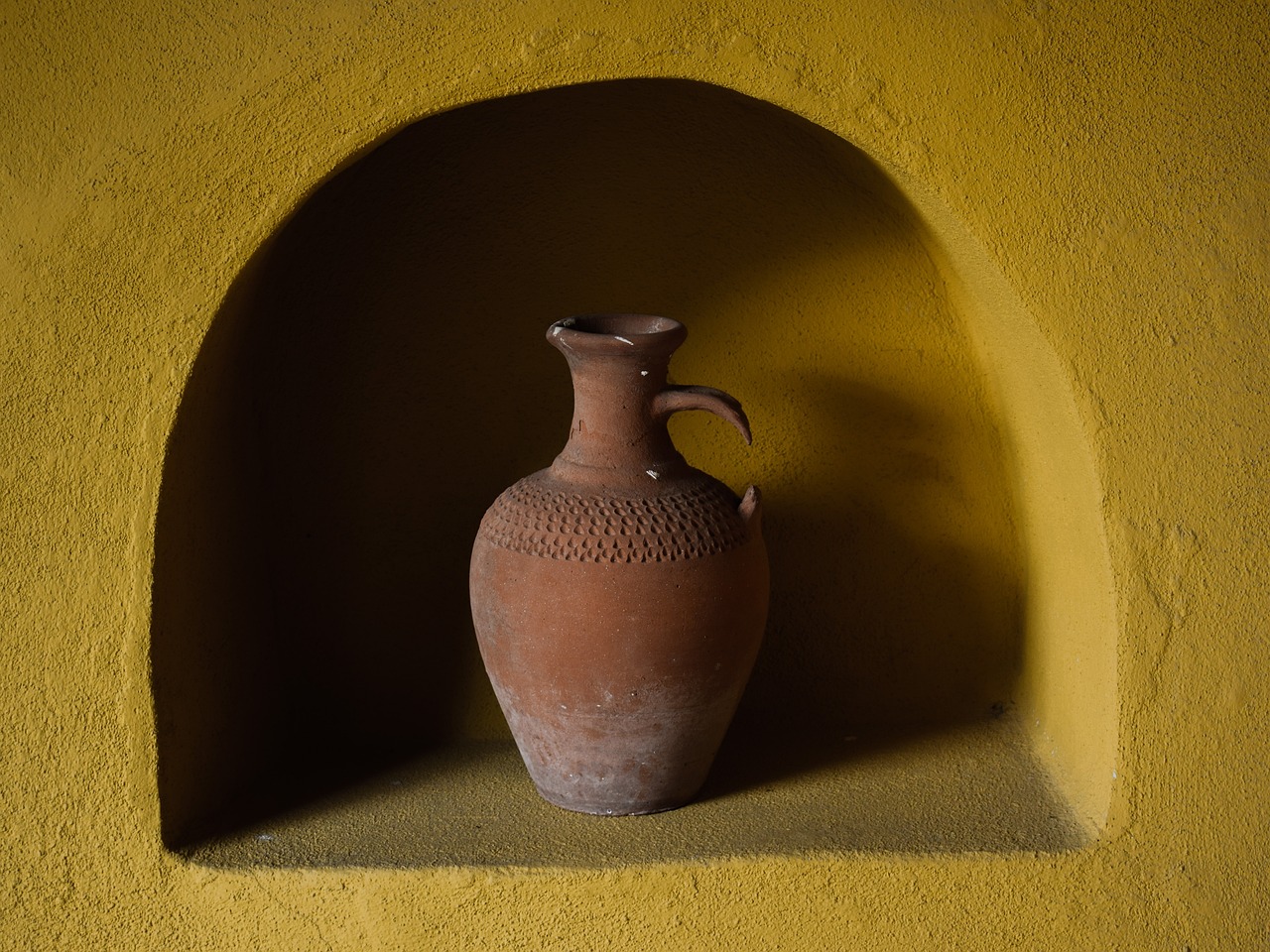
Cultural Narratives Embedded in Clay
Pottery is not just a means of creating functional objects; it is a vibrant canvas that reflects the rich tapestry of cultural narratives across the globe. Each piece of pottery carries with it the essence of the community from which it originates, embodying stories that have been passed down through generations. For instance, Native American pottery often features intricate designs that tell tales of their spiritual beliefs and connection to nature. The swirling patterns and vibrant colors are not merely aesthetic; they represent the interconnectedness of life and the sacredness of the earth.
In contrast, ancient Greek pottery serves as a historical archive, depicting mythological scenes and everyday life. The black-figure and red-figure techniques used by Greek artisans allowed them to immortalize stories of gods, heroes, and daily activities. These narratives provide us with insights into their values, social structures, and beliefs, showcasing how pottery can serve as a time capsule of human experience.
Moreover, pottery styles vary widely across cultures, each with its unique storytelling approach. For example, in Japan, the art of Raku pottery is deeply rooted in Zen philosophy, emphasizing the beauty of imperfection and the transient nature of life. The unpredictable crackling in the glaze serves as a metaphor for the beauty found in fleeting moments. This cultural narrative encourages viewers to appreciate the journey rather than focusing solely on the end product.
Another striking example is found in African pottery, where the shapes and textures often convey messages about community and identity. The use of color and form can signify various aspects such as fertility, harvest, or even social status. The storytelling in African pottery is not just visual; it is deeply embedded in the rituals and practices of the community, making each piece a vital part of their cultural heritage.
In essence, pottery serves as a cultural narrative that transcends time and space. It invites us to explore the stories behind each piece, allowing us to connect with the past while appreciating the artistry of the present. As we delve into these narratives, we uncover the shared human experiences that unite us, reminding us that every piece of pottery is a whisper of history waiting to be heard.
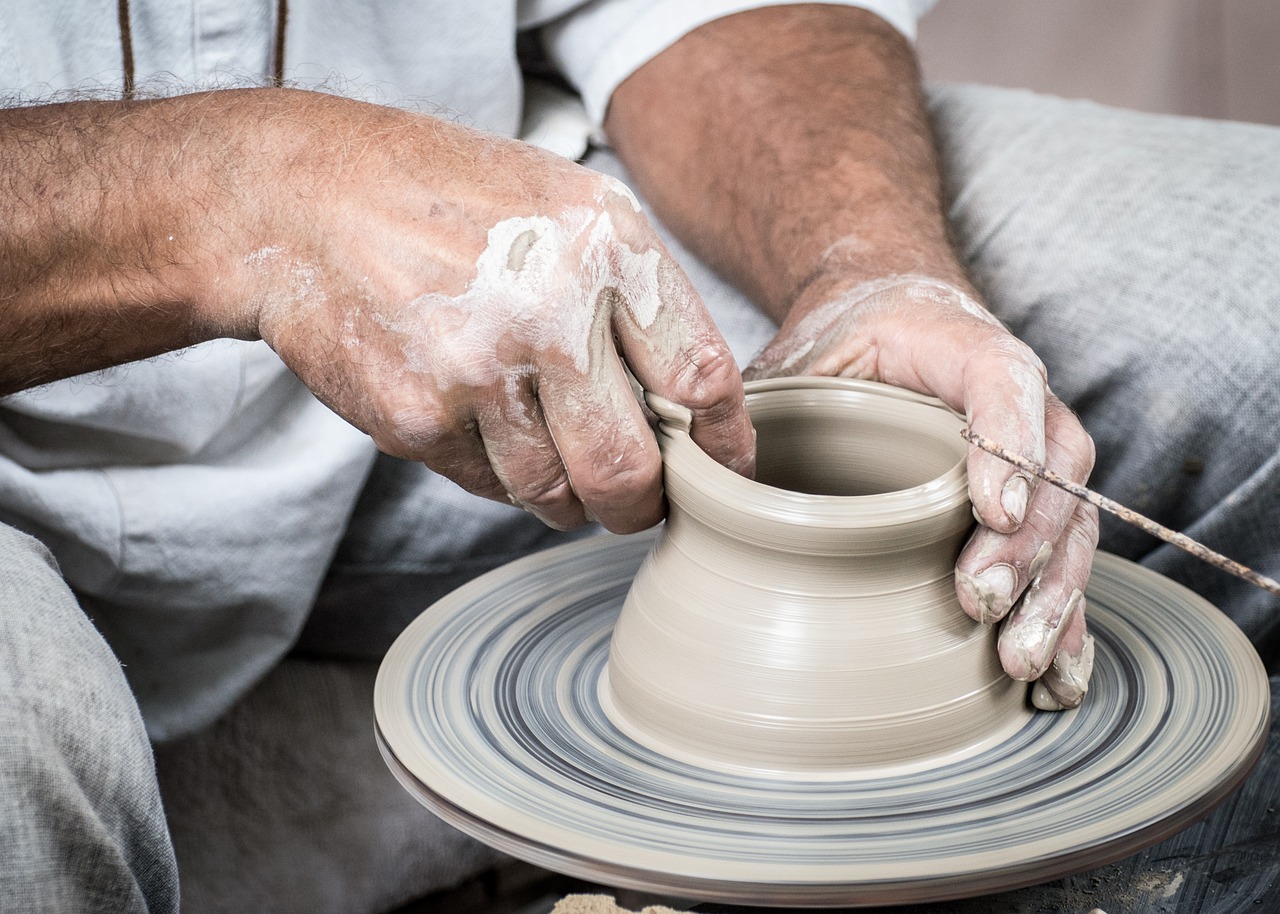
The Techniques of Storytelling in Pottery
When we think of pottery, the first image that often comes to mind is that of a simple clay pot or bowl. However, pottery is much more than just functional ware; it's a profound medium for storytelling. Artists utilize various techniques to breathe life into their creations, transforming basic clay into intricate narratives that speak to the viewer. Each stroke of the brush, each glaze applied, and each sculpted detail serves as a chapter in the story being told.
One of the primary techniques in pottery storytelling is glazing. This process involves applying a liquid mixture that, when fired in a kiln, forms a glass-like coating on the surface of the pottery. Glazes can vary in color, texture, and finish, allowing artists to convey different emotions and themes. For instance, a glossy, vibrant glaze might evoke feelings of joy and celebration, while a matte, earthy tone might reflect a connection to nature and tradition. The choice of glaze can significantly alter the narrative, as it sets the mood and atmosphere of the piece.
Another essential technique is sculpting. This involves shaping the clay into forms that can represent figures, animals, or abstract designs. Sculpted elements can add depth to the story, making it more engaging for the viewer. For example, a potter might sculpt a series of animals around the rim of a bowl to depict a local legend or myth. Each animal could represent a character in the story, allowing the viewer to interpret the narrative through the shapes and forms presented. The tactile nature of sculpting invites the audience to connect with the piece on a sensory level, enhancing the storytelling experience.
Painting is yet another technique that plays a crucial role in storytelling through pottery. Artists often apply intricate designs or motifs that symbolize various themes and messages. For example, a potter might paint swirling patterns that represent water, symbolizing life and rejuvenation, or use geometric shapes that reflect the harmony of the universe. These visual elements not only enhance the aesthetic appeal of the pottery but also serve as visual storytelling devices that communicate deeper meanings.
In addition to these techniques, the use of symbols in pottery designs can enrich the narrative even further. Many cultures have specific symbols that hold significant meanings, such as fertility, prosperity, or spirituality. For instance, a potter in a Native American community might incorporate the symbol of a turtle, representing longevity and wisdom, into their work. By understanding these symbols, viewers can gain insight into the cultural context and the story behind the piece. This interplay between form, color, and symbolism creates a rich tapestry of narrative that resonates with audiences.
Moreover, the distinction between functional and decorative pottery also influences storytelling techniques. Functional pottery, like mugs and plates, often tells a story through its utility and the everyday experiences it encapsulates. On the other hand, decorative pottery allows artists to explore more elaborate narratives, often showcasing their creativity and personal expression. These decorative pieces can act as conversation starters, inviting viewers to engage with the artwork and its story on a deeper level.
Ultimately, the techniques of storytelling in pottery are as diverse as the cultures and artists who create them. Each piece is a unique narrative waiting to be discovered, inviting us to explore the rich history, emotions, and experiences embedded in clay. As we delve into these stories, we find that pottery is not just an art form; it is a vessel for human connection and cultural expression.
- What materials are commonly used in pottery storytelling? Pottery artists typically use clay, glazes, and various tools for sculpting and painting. The choice of materials can greatly influence the narrative.
- How does pottery reflect cultural identity? Different cultures have unique styles, techniques, and symbols in their pottery, allowing artists to express their cultural narratives and heritage.
- Can pottery be both functional and decorative? Yes! Many pottery pieces serve practical purposes while also being beautifully designed to tell a story.
- What role do community workshops play in pottery storytelling? Community workshops encourage collaboration and shared experiences, allowing participants to create pottery that reflects their collective narratives.

Symbolism in Pottery Designs
When we think about pottery, we often envision beautiful vases or functional dishes, but what many don't realize is that these creations are often rich with symbolism. Each curve, color, and design element can convey profound meanings that connect us to the past, present, and even the spiritual realm. For instance, in many indigenous cultures, pottery is not just a craft but a storytelling medium that communicates the values and beliefs of the community.
Take, for example, the intricate designs found in Native American pottery. These pieces often feature symbols like the spiral, which represents the journey of life, or the turtle, symbolizing longevity and stability. Each design is meticulously chosen, serving as a visual narrative that reflects the community's connection to nature and their ancestral roots. The use of color also plays a crucial role; earthy tones may signify harmony with the earth, while brighter colors can represent joy and celebration.
Furthermore, pottery from different cultures often embodies unique motifs that tell specific stories. In ancient Chinese pottery, for example, the depiction of dragons is not merely decorative; it symbolizes power and strength. Similarly, in African pottery, patterns may represent different tribes or clans, acting as a form of identity and heritage. This deep-rooted connection between symbolism and pottery design makes each piece a valuable artifact, rich with history and meaning.
Interestingly, the symbolism in pottery can also evolve over time. Contemporary artists often reinterpret traditional symbols, blending them with modern themes to address current societal issues. This fusion not only keeps the art form alive but also allows for new narratives to emerge, inviting viewers to engage with the stories in a fresh way.
In summary, the symbolism embedded in pottery designs is a powerful testament to the human experience. It allows us to connect with different cultures and histories, reminding us that every piece of pottery is not just an object, but a vessel of storytelling that transcends time and space.

Functional vs. Decorative Pottery
When we dive into the world of pottery, we quickly discover that it can be categorized into two main types: functional and decorative. Each serves a unique purpose and tells its own story, yet both are equally significant in the realm of artistic expression. Functional pottery includes items like bowls, plates, and mugs that are designed for everyday use. These pieces often reflect the practical needs of the people who create them. Imagine sipping your morning coffee from a handmade mug; it’s not just a vessel for your drink, but a piece of art that carries the warmth of its maker’s hands and the stories of its creation.
On the other hand, decorative pottery is where the artist’s imagination truly shines. These pieces are often intricate and elaborate, designed to be admired rather than used. They may depict scenes from mythology, nature, or abstract concepts, inviting the viewer to engage with the narrative woven into the clay. For instance, a beautifully painted vase might tell the story of a local legend, using colors and shapes that evoke emotion and provoke thought. By choosing to create decorative pottery, artists can explore deeper themes and express personal or cultural identities in ways that functional pieces might not allow.
One of the fascinating aspects of pottery is how these two categories can overlap. A functional piece can be decorative as well, showcasing artistic design while serving a practical purpose. Consider a beautifully glazed bowl that is both a centerpiece on your dining table and a functional item for serving food. This duality enriches the storytelling aspect of pottery, as each piece can convey multiple narratives depending on its context and use.
To better understand the differences and similarities between functional and decorative pottery, let’s take a look at the following table:
| Aspect | Functional Pottery | Decorative Pottery |
|---|---|---|
| Purpose | Everyday use | Aesthetic appreciation |
| Design Complexity | Simple, practical designs | Intricate, elaborate designs |
| Artist's Intent | To serve a function | To tell a story or evoke emotion |
| Examples | Bowls, plates, mugs | Vases, sculptures, decorative plates |
In conclusion, the distinction between functional and decorative pottery is not always clear-cut. Both types of pottery offer a rich tapestry of stories and experiences, reflecting the culture and creativity of their makers. Whether you’re using a handmade bowl for your soup or admiring a stunning vase on your shelf, you are engaging with the art of storytelling through pottery. Each piece, regardless of its classification, invites us to connect with the past and appreciate the artistry involved in its creation.
- What is functional pottery? Functional pottery refers to items designed for everyday use, such as bowls, plates, and mugs.
- What is decorative pottery? Decorative pottery is primarily created for aesthetic purposes, showcasing artistic designs and narratives.
- Can pottery be both functional and decorative? Yes, many pottery pieces serve both purposes, combining practicality with artistic expression.
- What stories do pottery pieces tell? Pottery can narrate cultural histories, personal experiences, and universal themes through its designs and forms.
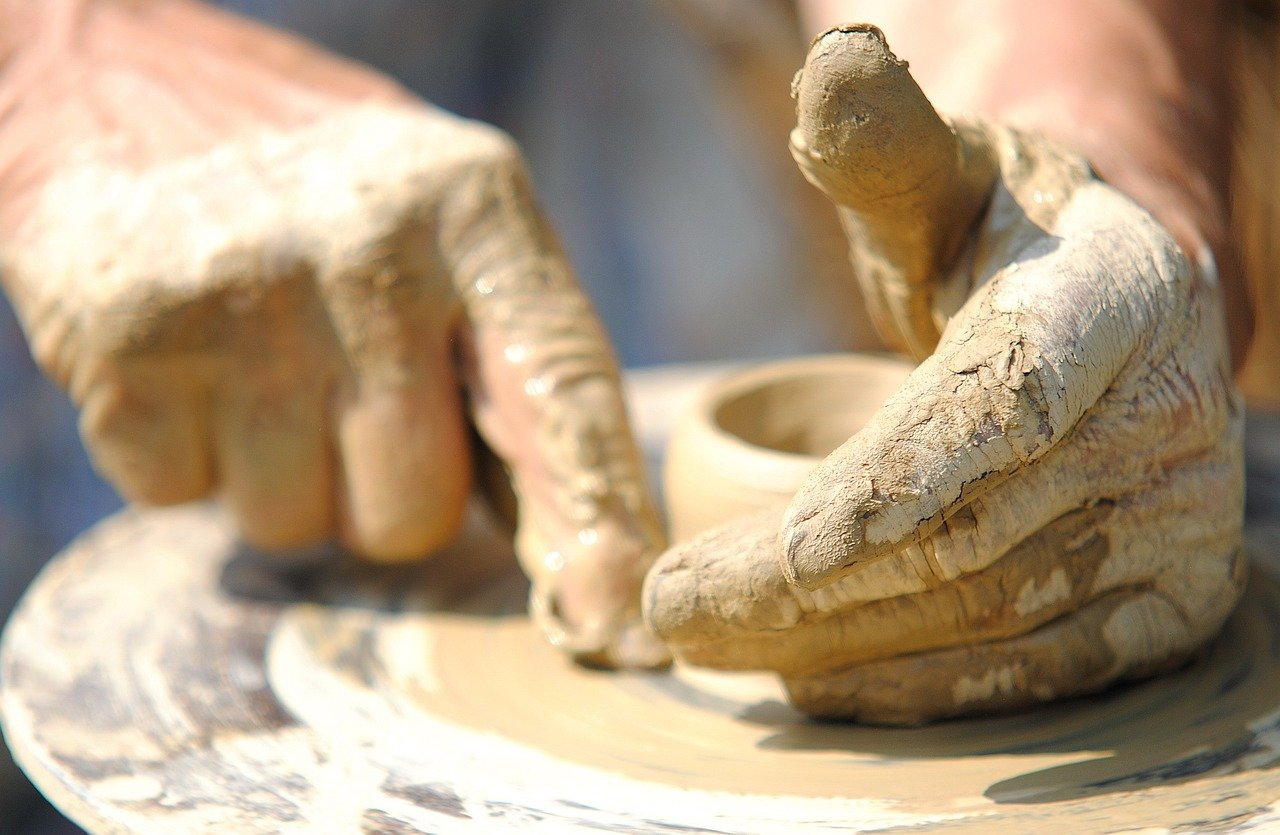
The Role of Pottery in Community Storytelling
Pottery is much more than just a utilitarian craft; it serves as a vital thread in the fabric of community storytelling. Throughout history, communities have gathered around the act of creating pottery, using it not only to produce functional items but also to share and preserve their collective stories. Imagine a group of artisans, hands covered in clay, laughter and stories flowing as freely as the water they use to mix their materials. This communal aspect of pottery-making creates a sense of belonging and continuity, allowing generations to connect through shared experiences.
In many cultures, pottery is integral to rituals and celebrations. For instance, in some Indigenous cultures, the act of crafting pottery is often accompanied by storytelling sessions that recount the origins of their people, significant events, or moral lessons. These narratives are not merely told; they are embedded in the very clay that forms the pots, bowls, and other items. Each piece carries with it the weight of history, culture, and personal anecdotes, making every item a unique storyteller.
Moreover, pottery workshops in local communities serve as a hub for engagement and collaboration. When individuals come together to mold clay, they aren’t just creating art; they’re sharing their lives, their dreams, and their struggles. These workshops often foster an environment where participants can express their identity and heritage through their creations. For example, a workshop may focus on traditional techniques that have been passed down through generations, allowing participants to reconnect with their roots and share their stories with others.
In addition to workshops, exhibitions and storytelling events centered around pottery play a crucial role in community storytelling. These events provide platforms for artists to showcase their work and narrate the stories behind each piece. Attendees are not just passive viewers; they engage with the artwork and the artist, often asking questions that lead to deeper discussions about culture, history, and personal experiences. This interaction enriches the community's understanding of its own narrative, creating a tapestry of voices that reflect the diverse experiences of its members.
To illustrate the significance of pottery in community storytelling, consider the following table that highlights various ways pottery serves this role:
| Aspect | Description |
|---|---|
| Rituals | Pottery is often used in ceremonies, symbolizing cultural beliefs and practices. |
| Workshops | Community pottery workshops encourage collaboration and the sharing of personal stories. |
| Exhibitions | Art exhibitions allow artists to narrate the stories behind their creations, fostering community engagement. |
In conclusion, pottery is a powerful medium for community storytelling, serving as a bridge between past and present, individual and collective. As communities continue to embrace this art form, they not only preserve their heritage but also create a dynamic narrative that evolves with each new generation. So, the next time you see a beautifully crafted pot, remember that it may hold within it a story waiting to be told, a connection waiting to be made.
- What is the significance of pottery in different cultures? Pottery often reflects the beliefs, traditions, and values of a culture, serving as a medium for storytelling and artistic expression.
- How can pottery workshops enhance community engagement? Workshops foster collaboration and allow participants to share their experiences, creating a sense of belonging and continuity within the community.
- What role do exhibitions play in storytelling through pottery? Exhibitions provide a platform for artists to share their narratives, connecting audiences with the stories behind each piece of pottery.
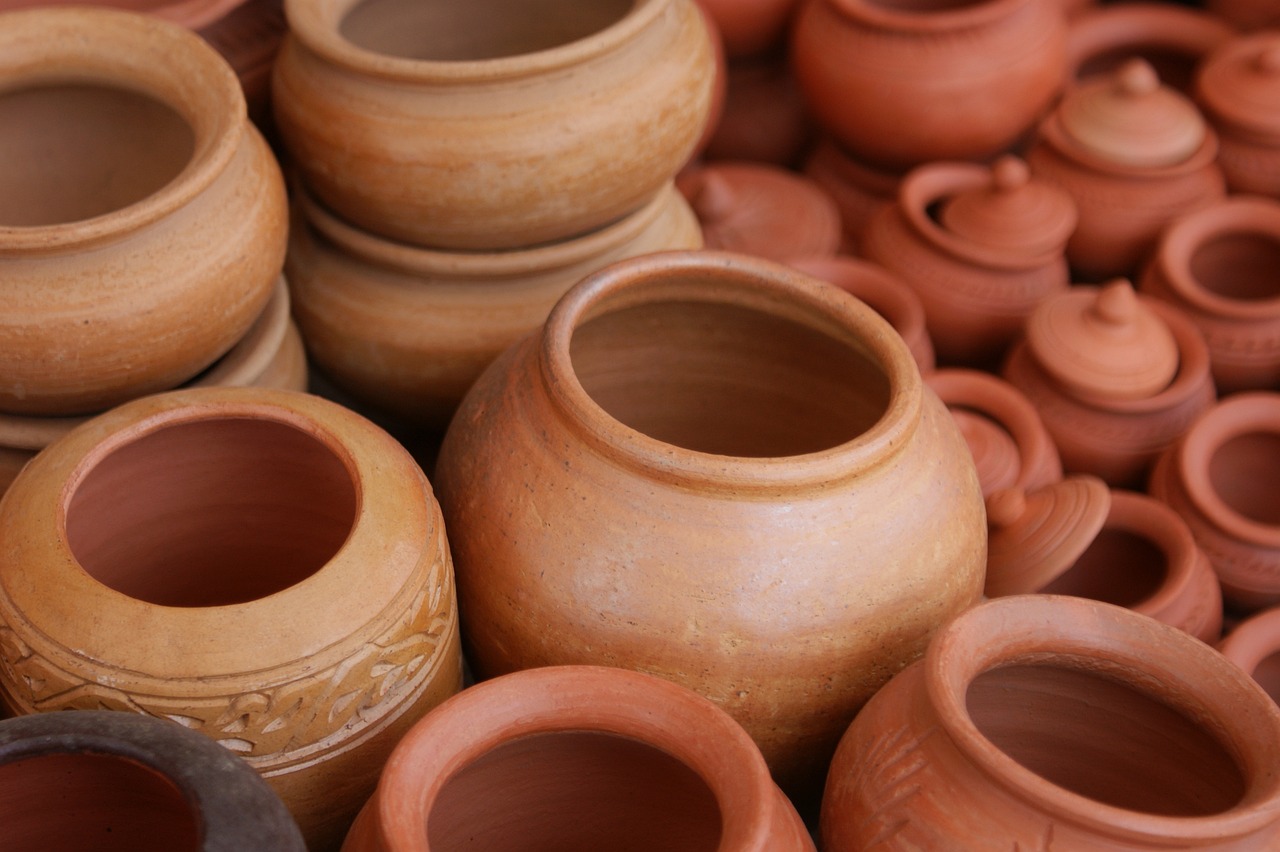
Pottery Workshops and Community Engagement
Pottery workshops are more than just a place to mold clay; they are vibrant hubs of community engagement and creativity. Imagine a room filled with laughter, the sound of spinning wheels, and the earthy aroma of wet clay. These workshops bring people together, transcending age, background, and skill level. Participants often find themselves sharing stories and experiences as they shape their creations, making each piece a reflection of their collective journey.
In these workshops, individuals not only learn the technical skills of pottery—like hand-building, wheel-throwing, and glazing—but they also forge connections with one another. The act of creating art is inherently personal, yet in a communal setting, it evolves into a shared experience. As participants engage in the tactile process of shaping clay, they often find themselves opening up about their lives, their dreams, and their cultural backgrounds. This exchange of stories enriches the creative process, allowing for a deeper understanding of one another.
Furthermore, pottery workshops can serve as a platform for cultural storytelling. Many communities have their own unique pottery traditions, and workshops often incorporate these elements, allowing participants to explore their heritage. For example, a workshop might focus on indigenous pottery techniques, where participants learn about the historical significance of certain designs and motifs. This not only educates but also fosters a sense of pride and ownership in one’s cultural narrative.
Moreover, these workshops often culminate in community events where participants showcase their creations. Such exhibitions are not merely displays of art; they are celebrations of shared stories and experiences. Families and friends gather to admire the pieces, each telling its own story through the hands that crafted it. These events can also feature storytelling sessions where participants narrate their experiences and the inspirations behind their work, creating a rich tapestry of voices and narratives.
| Benefits of Pottery Workshops | Description |
|---|---|
| Skill Development | Participants learn various pottery techniques, enhancing their artistic abilities. |
| Community Building | Workshops foster connections among participants, creating a sense of belonging. |
| Cultural Preservation | Workshops highlight traditional pottery techniques, preserving cultural narratives. |
| Creative Expression | Participants explore their creativity, resulting in unique, personal artworks. |
In conclusion, pottery workshops are a dynamic blend of art, storytelling, and community engagement. They not only teach valuable skills but also serve as a medium for personal and communal expression. As participants mold the clay, they are, in essence, molding their narratives, creating a beautiful interplay of art and life. The stories shared in these spaces are as diverse as the individuals who create them, ensuring that the tradition of storytelling through pottery continues to thrive in our communities.
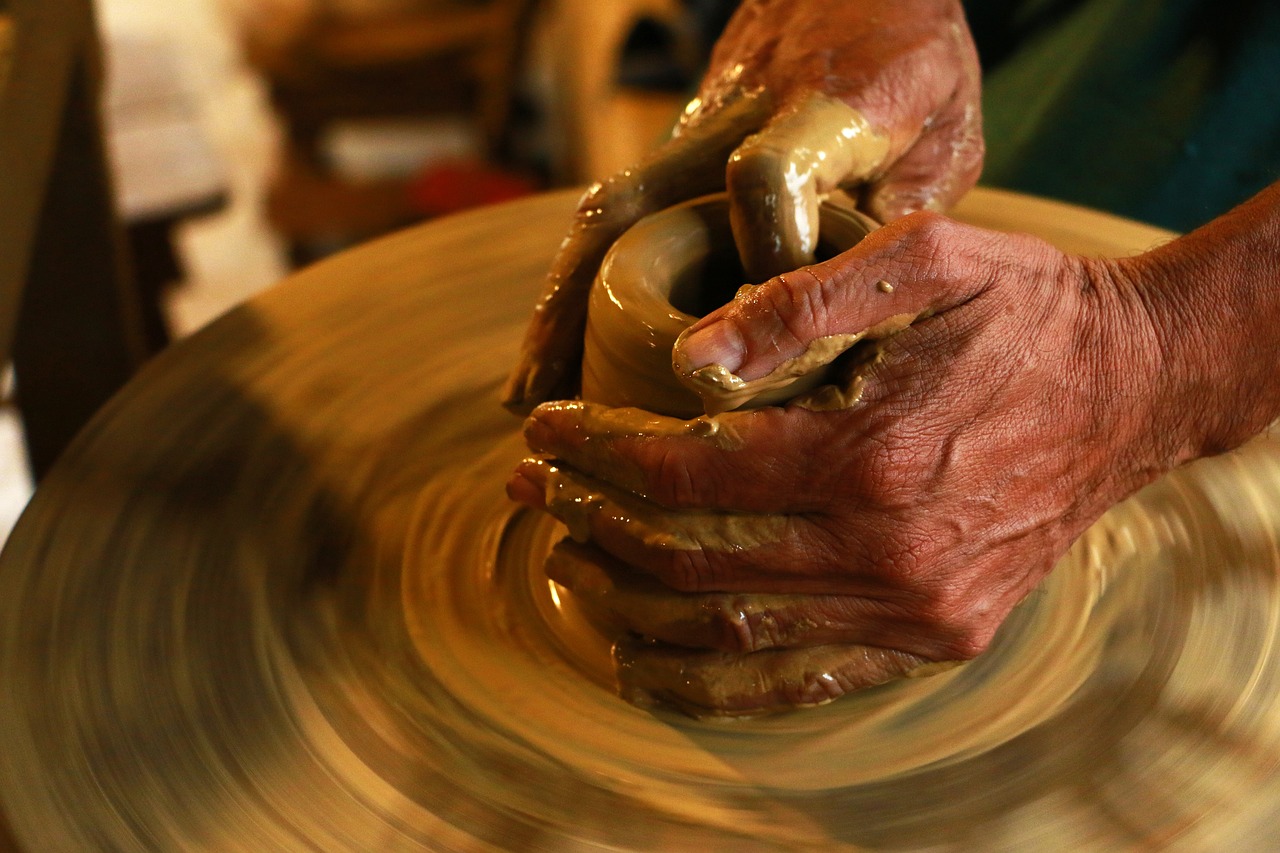
Exhibitions and Storytelling Events
Exhibitions and storytelling events centered around pottery are not just gatherings; they are vibrant celebrations of culture and creativity. These events provide a unique platform for artists to showcase their work, allowing them to share the intricate narratives woven into each piece. Imagine walking into a space filled with stunning ceramic creations, each telling a story that resonates with the viewer. The air is thick with anticipation as attendees gather, eager to connect with the artists and learn about the inspirations behind their work.
At these exhibitions, the atmosphere is electric. Artists often take center stage, sharing their journeys and the cultural significance of their creations. It's a chance for them to explain how each swirl of color or intricate design reflects their heritage and personal experiences. For instance, a potter might describe how a specific pattern symbolizes their community's connection to nature or how a particular technique has been passed down through generations. This storytelling aspect transforms the viewing experience from a passive observation to an engaging dialogue.
Moreover, storytelling events often feature interactive components, such as live demonstrations where artists showcase their techniques in real-time. Attendees can witness the magic of pottery-making firsthand, from the shaping of the clay to the final glazing process. This hands-on experience not only deepens appreciation for the art form but also fosters a sense of community among participants. People from diverse backgrounds come together, united by their curiosity and shared love for storytelling through pottery.
Additionally, exhibitions can serve as a means of preserving cultural heritage. Many potters use their work to highlight historical narratives, bringing attention to forgotten stories or traditions that deserve to be remembered. For example, a ceramic piece might depict a historical event significant to a particular culture, sparking conversations that educate and inspire. By engaging with these stories, visitors leave with a richer understanding of the cultural tapestry that pottery represents.
In conclusion, exhibitions and storytelling events are vital in keeping the art of pottery alive and relevant. They not only celebrate the skill of the artisans but also emphasize the importance of storytelling in human experience. As attendees connect with the narratives behind each piece, they become part of a larger story—one that honors tradition while embracing innovation. These events remind us that pottery is more than just clay; it's a powerful medium for sharing our collective human experiences.

The Future of Storytelling in Pottery
As we look toward the future, the art of storytelling through pottery is poised for an exciting evolution. With the advent of new technologies and materials, potters and artists are finding innovative ways to express their narratives, ensuring that this ancient craft remains vibrant and relevant. Imagine a world where traditional techniques blend seamlessly with modern technology—pottery that not only tells a story but also interacts with its audience through augmented reality or digital storytelling. This fusion of the old and the new opens up a realm of possibilities for artists to explore.
One significant trend is the incorporation of eco-friendly materials and sustainable practices in pottery. As society becomes increasingly aware of environmental issues, artists are responding by using recycled materials and natural glazes. This shift not only tells a story about the artist's commitment to the planet but also invites the viewer to engage with the piece on a deeper level, reflecting on their own relationship with nature. The narrative of sustainability is becoming a vital part of the artistic process, allowing potters to convey messages of hope and responsibility through their work.
Moreover, the digital age has revolutionized how artists share their work and stories. Social media platforms and online galleries provide a global stage for potters to showcase their creations and the narratives behind them. Artists can now connect with audiences worldwide, sharing their inspirations and techniques through videos, blogs, and interactive content. This accessibility not only enhances the storytelling aspect but also fosters a sense of community among potters and art enthusiasts.
In addition, pottery is increasingly being recognized as a form of therapeutic expression. Workshops and community programs are popping up everywhere, emphasizing the mental health benefits of engaging in creative activities. Participants often share their personal stories and experiences while working with clay, creating a rich tapestry of narratives that reflect collective healing and growth. These sessions not only produce beautiful pieces of art but also serve as a powerful medium for storytelling, where each creation embodies the emotions and journeys of its maker.
As we move forward, we can expect to see more collaborative projects that blend various art forms with pottery. Imagine pottery pieces that incorporate elements of performance art, music, or dance, creating a multi-sensory experience that deeply engages the audience. This interdisciplinary approach will undoubtedly enrich the narratives told through pottery, allowing artists to push boundaries and explore new dimensions of storytelling.
In conclusion, the future of storytelling in pottery is not just about the clay itself but about the connections it fosters and the stories it tells. With each new technique, material, and collaboration, pottery continues to evolve as a powerful medium for expression and communication. As we embrace these changes, we can look forward to a vibrant and dynamic future where the art of storytelling through pottery remains a cherished part of our cultural heritage.
- What are some new techniques being used in pottery today? Artists are exploring 3D printing, digital glazing, and eco-friendly materials to create innovative pottery pieces.
- How can pottery serve as a therapeutic tool? Engaging in pottery allows individuals to express their emotions creatively, often leading to personal healing and community connection.
- What role does technology play in modern pottery? Technology enhances storytelling by allowing artists to share their work through social media and digital platforms, reaching a global audience.
- Are there community programs focused on pottery? Yes, many communities offer workshops that encourage collaboration and storytelling among participants, enriching the cultural narrative.
Frequently Asked Questions
- What is the significance of storytelling in pottery?
Storytelling in pottery is a powerful medium that allows artists to express human experiences, emotions, and cultural narratives. Each piece of pottery can convey a story through its design, colors, and symbols, making it not just a functional object but a canvas for artistic expression.
- How has pottery been used throughout history?
Pottery has been utilized for thousands of years, serving practical purposes such as storage and cooking. However, it also acts as a historical record, showcasing the artistic styles and cultural values of different societies. From ancient civilizations to modern times, pottery has reflected the evolution of human creativity.
- What techniques do artists use to tell stories through pottery?
Artists employ various techniques like glazing, sculpting, and painting to create intricate narratives in pottery. Each method adds depth and character to the piece, allowing the artist to explore themes and ideas that resonate with viewers.
- Are there specific symbols used in pottery, and what do they mean?
Yes, many pottery designs incorporate symbols and motifs that hold significant meanings. For example, symbols may represent fertility, nature, or spirituality, enriching the narrative conveyed through the artwork and connecting it to the cultural beliefs of the community.
- What is the difference between functional and decorative pottery?
Functional pottery is designed for everyday use, such as bowls and plates, while decorative pottery focuses more on artistic expression. Decorative pieces often tell more elaborate stories and allow artists to explore their creativity without the constraints of functionality.
- How does pottery contribute to community storytelling?
Pottery plays a vital role in community storytelling by serving as a medium for sharing experiences and preserving cultural heritage. Community gatherings often feature pottery that reflects shared histories, fostering a sense of connection and belonging among participants.
- What role do pottery workshops play in storytelling?
Pottery workshops encourage collaboration and creativity, allowing participants to create pieces that reflect their shared experiences. These workshops not only teach techniques but also facilitate storytelling, making the art form a communal activity.
- Are there events that focus on pottery and storytelling?
Yes, art exhibitions and storytelling events centered around pottery provide platforms for artists to share their narratives. These events connect audiences with the stories behind each piece, enriching the appreciation of pottery as an art form.
- What does the future hold for storytelling in pottery?
The future of storytelling in pottery looks promising as artists continue to explore new techniques and materials. This evolution ensures that the art of storytelling through pottery remains dynamic and relevant, adapting to contemporary themes and societal changes.



















